Panther Chameleon
- January 4, 2024
- 0 comment
The Panther Chameleon, scientifically known as Furcifer pardalis, is a mesmerizing reptile native to the vibrant ecosystems of Madagascar. Renowned for its stunning and ever-changing coloration, this chameleon species stands out as a true marvel of nature. Panther Chameleons inhabit various regions of Madagascar, showcasing their remarkable ability to adapt to different climates and terrains. Beyond their captivating appearance, these chameleons possess unique features like a prehensile tail and independently moving eyes, adding to their allure.
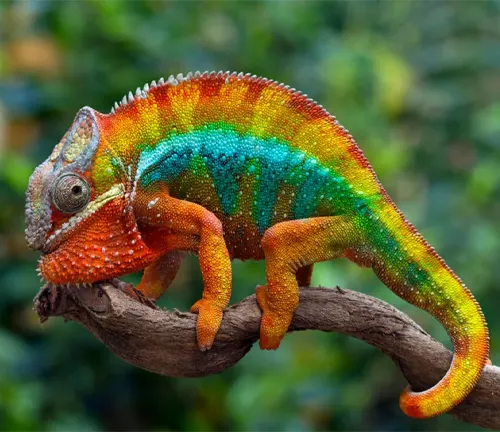
In the wild, they are insectivores, relying on a diet of various insects, and their hunting technique, involving a lightning-fast tongue, is a spectacle to behold. Whether in their natural habitat or as exotic pets, Panther Chameleons captivate enthusiasts with their fascinating behaviors, intricate mating rituals, and the sheer diversity of color morphs within the species. Understanding the intricacies of their care, including suitable enclosures, proper nutrition, and attention to health, is crucial for those who appreciate these enchanting creatures. As we explore the world of Panther Chameleons, it becomes evident that they are not just reptiles; they are living works of art deserving of admiration and responsible stewardship.
| Aspect | Specifications |
|---|---|
| Scientific Name | Furcifer pardalis |
| Native Habitat | Madagascar, inhabiting various regions from dense rainforests to arid plains |
| Coloration | Striking and vibrant; ranges from blues and greens to reds and yellows, with the ability to change colors |
| Distinctive Features | Prehensile tail, independently moving eyes, and a remarkable, lightning-fast tongue for hunting |
| Diet | Insectivores, relying on a diet of various insects |
| Reproduction | Intricate mating rituals, with gestation and hatching processes |
| Captive Care | Requires suitable enclosures, specific temperature, humidity levels, and a well-balanced diet |
| Health Issues | Common issues include respiratory infections, metabolic bone disease, and parasites |
| Popular Species | Various color morphs, including Ambanja, Nosy Be, and others |
| Conservation Status | Faces threats in the wild due to habitat loss, illegal trade, and climate change |
| Chameleon Trade | Popular in the exotic pet trade, raising concerns about illegal trade and responsible ownership |
| Lifespan | In captivity, can live around 5 to 7 years with proper care |
| Social Behavior | Solitary creatures; should be housed individually to avoid territorial conflicts |
| Breeding Challenges | Breeding is complex, requiring attention to genetic diversity and ethical considerations |
| Community Resources | Online forums and communities provide a space for sharing experiences and knowledge |
| Fun Facts | Eyes can move independently, allowing observation without head movement |
Panther Chameleons, scientifically known as Furcifer pardalis, are captivating creatures that hail from the diverse ecosystems of Madagascar. Their striking appearance, vibrant coloration, and unique features make them a favorite among reptile enthusiasts. In this article, we’ll delve into the fascinating world of Panther Chameleons, exploring their natural habitat, physical characteristics, dietary habits, and much more.
Natural Habitat
Madagascar, an island teeming with biodiversity, is the native home of Panther Chameleons. These chameleons thrive in various regions of the island, adapting to different climates and terrains. From dense rainforests to arid plains, Panther Chameleons have carved out their niche, showcasing their remarkable ability to adapt.
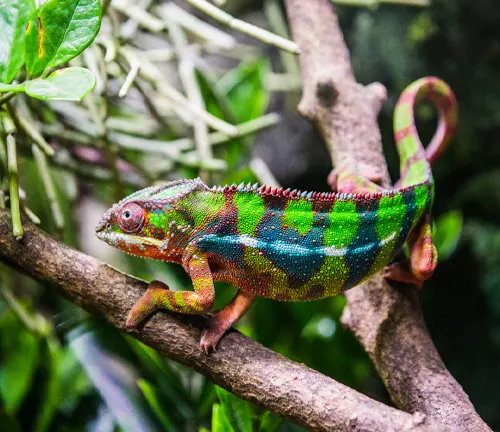
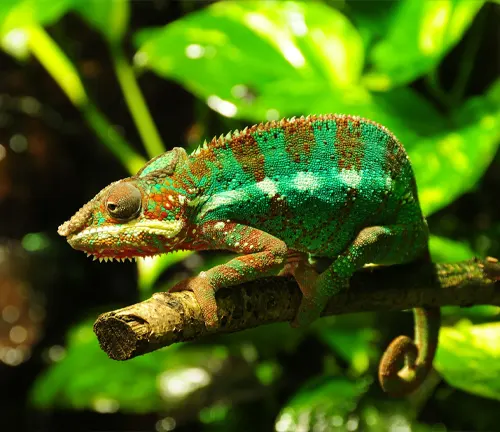
Physical Characteristics
One cannot discuss Panther Chameleons without marveling at their vibrant and ever-changing coloration. These reptiles boast an impressive range of hues, from radiant blues and greens to striking reds and yellows. The ability to alter their colors serves multiple purposes, including communication, camouflage, and thermal regulation. Besides their color-changing prowess, Panther Chameleons possess a prehensile tail, independently moving eyes, and a remarkable tongue used for hunting.
Diet and Feeding Habits
Panther Chameleons are insectivores, relying on a diet of various insects. Their hunting technique involves patiently waiting for prey and then employing their lightning-fast tongue to capture it. Understanding their feeding habits is crucial for those considering Panther Chameleons as pets, as a proper diet is essential for their well-being.
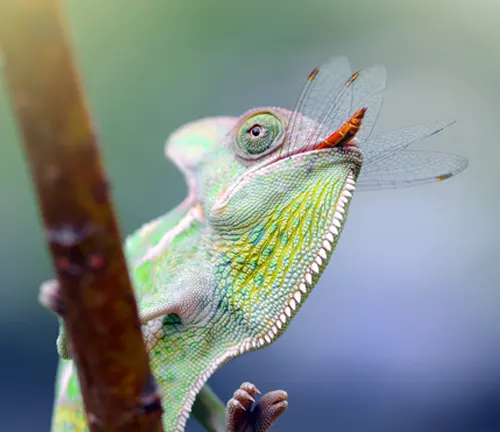
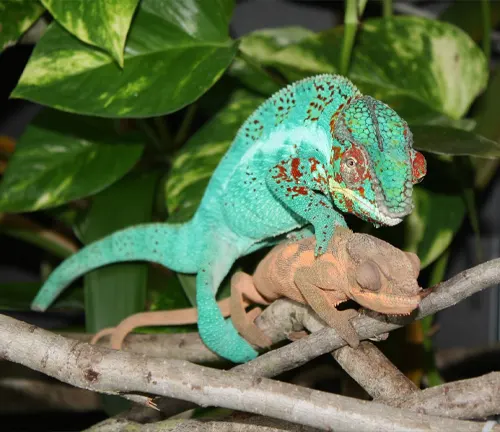
Reproduction
The mating rituals of Panther Chameleons are as captivating as their appearance. Intricate displays of color and behavior play a crucial role in attracting potential mates. Once successful, the gestation period and hatching process reveal the wonders of Panther Chameleon reproduction.
Captive Care
For those who aspire to care for Panther Chameleons, creating a suitable environment is paramount. Proper enclosures, temperature, and humidity levels mimic their natural habitat, ensuring their health and well-being. Additionally, a well-balanced diet and regular veterinary check-ups are vital components of captive care.
Common Health Issues
Recognizing signs of illness in Panther Chameleons is essential for responsible pet ownership. Respiratory infections, metabolic bone disease, and parasites are common health issues that require prompt attention. Preventive measures, such as maintaining a clean environment and providing proper nutrition, contribute to their overall well-being.
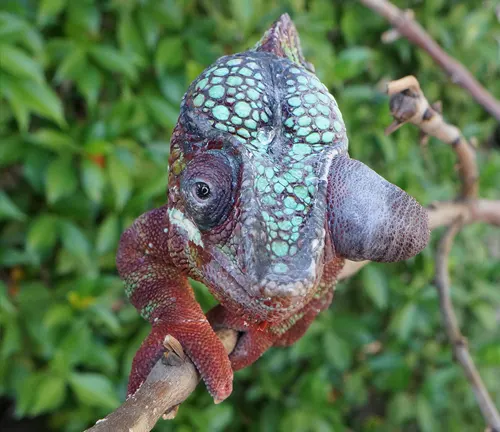
Conservation Status
Despite their captivating presence, Panther Chameleons face threats in the wild. Habitat loss, illegal trade, and climate change contribute to their declining population. Conservation efforts strive to protect these creatures and their habitats.
The Chameleon Trade
While Panther Chameleons are popular in the exotic pet trade, concerns about illegal trade persist. It is crucial to raise awareness about responsible ownership and discourage the illegal trade that poses a threat to wild populations.
Panther Chameleons as Pets
Owning a Panther Chameleon can be a rewarding experience, but it comes with challenges. Prospective owners must be aware of the commitment required for their care, including the financial and time investments. Responsible pet ownership ensures the well-being of the chameleon and contributes to conservation efforts.

Breeding Panther Chameleons
Breeding Panther Chameleons is a complex yet rewarding endeavor. Breeders face challenges in maintaining genetic diversity and promoting the health of the offspring. Ethical considerations, such as avoiding excessive breeding, are crucial for the well-being of the species.
Different Species
Ambanja Panther Chameleon
(Furcifer pardalis ambanja)
Known for its vibrant blue and green coloration, the Ambanja Panther Chameleon is a visually striking species native to the Ambanja region of Madagascar.

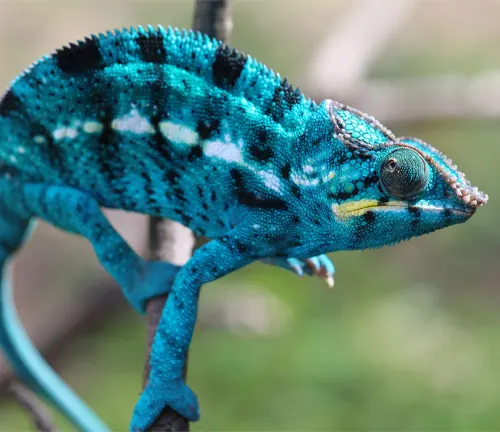
Nosy Be Panther Chameleon
(Furcifer pardalis nosybe)
Hailing from the Nosy Be island, this species showcases a stunning combination of blue and green hues. Its unique coloration and patterns make it a sought-after choice among chameleon enthusiasts.
Sambava Panther Chameleon
(Furcifer pardalis sambava)
Characterized by a vivid display of reds, oranges, and yellows, the Sambava Panther Chameleon originates from the Sambava region. Its fiery coloration is a testament to the diversity within the species.

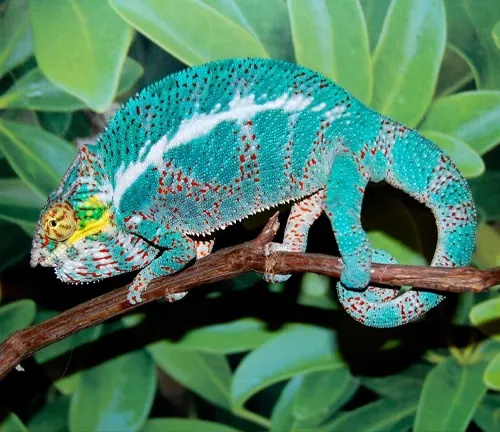
Nosy Faly Panther Chameleon
(Furcifer pardalis nosyfaly)
Native to the Nosy Faly island, this species is known for its striking blue coloration with intricate patterns. The Nosy Faly Panther Chameleon is a captivating addition to the array of color morphs.
Tamatave Panther Chameleon
(Furcifer pardalis tamatave)
The Tamatave Panther Chameleon boasts a unique blend of greens and blues. Originating from the Tamatave region, this species showcases the adaptability and diverse color range within the Panther Chameleon family.
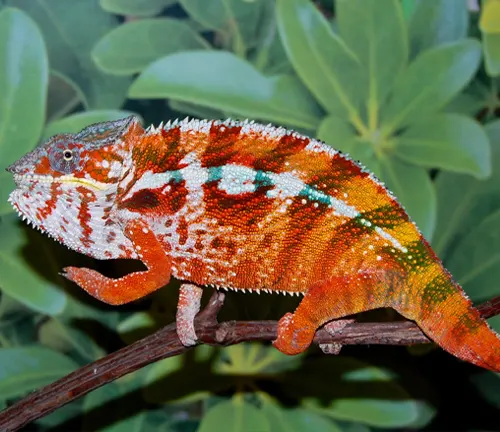
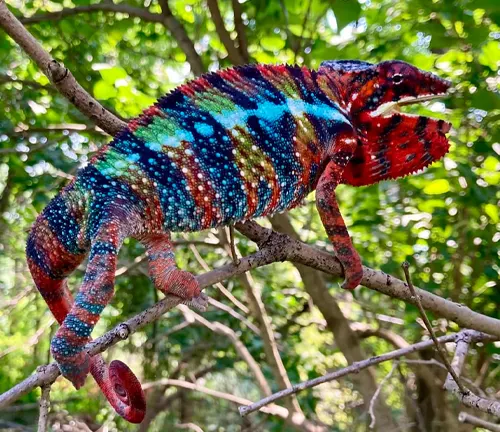
Ambilobe Panther Chameleon
(Furcifer pardalis ambilobe)
Renowned for its wide range of color morphs, the Ambilobe Panther Chameleon exhibits vibrant hues, including blue, green, and red. It is native to the Ambilobe region of Madagascar.
Maroantsetra Panther Chameleon
(Furcifer pardalis maroantsetra)
This species, originating from the Maroantsetra region, is characterized by its vibrant color palette, including shades of green, yellow, and blue. The Maroantsetra Panther Chameleon showcases the beauty of Madagascar’s biodiversity.
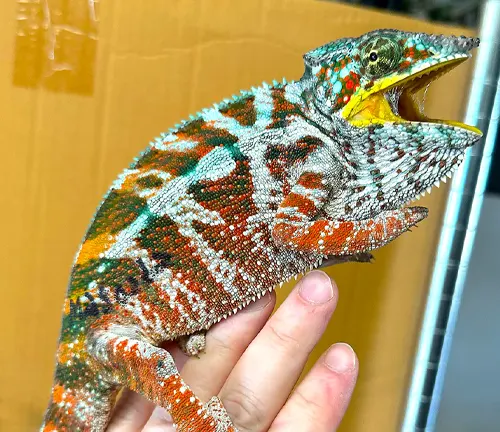

Diego Suarez Panther Chameleon
(Furcifer pardalis diegosuarezi)
Endemic to the Diego Suarez region, this species exhibits a mix of colors, including greens, blues, and reds. The Diego Suarez Panther Chameleon adds to the rich tapestry of Panther Chameleon variations.
Frequently Asked Questions (FAQs)
- What is a Panther Chameleon?
The Panther Chameleon (Furcifer pardalis) is a species of chameleon native to Madagascar, known for its vibrant coloration and unique features. - How long do Panther Chameleons live?
In captivity, Panther Chameleons typically live around 5 to 7 years with proper care. - Can Panther Chameleons change their color?
Yes, Panther Chameleons can change their color based on factors like mood, temperature, and communication. - Are Panther Chameleons good pets for beginners?
Panther Chameleons require specific care and are better suited for experienced reptile owners due to their unique needs. - What do Panther Chameleons eat?
They are insectivores, primarily feeding on various insects like crickets, mealworms, and flies. - Can Panther Chameleons be kept in groups?
No, Panther Chameleons are solitary creatures and should be housed individually to avoid territorial conflicts. - How do I create a suitable habitat for my Panther Chameleon?
Provide a spacious enclosure with branches, foliage, and proper temperature and humidity levels to mimic their natural habitat. - Are there different species of Panther Chameleons?
Yes, there are various species and color morphs, each with unique characteristics, such as Ambanja, Nosy Be, and Ambilobe. - What are common health issues in Panther Chameleons?
Respiratory infections, metabolic bone disease, and parasites are common health issues. Regular veterinary check-ups are recommended. - Q: Can I release a captive-bred Panther Chameleon into the wild?
Releasing captive-bred chameleons into the wild is discouraged, as it can disrupt ecosystems. Always consult with local authorities for guidance.



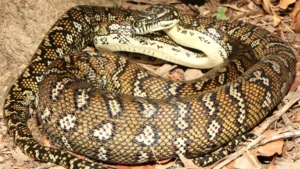

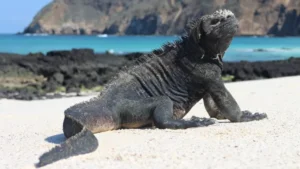
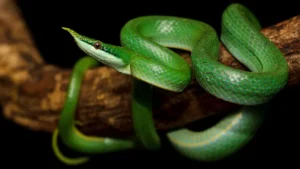


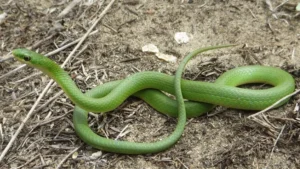
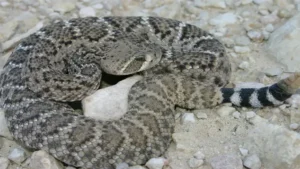



Leave your comment